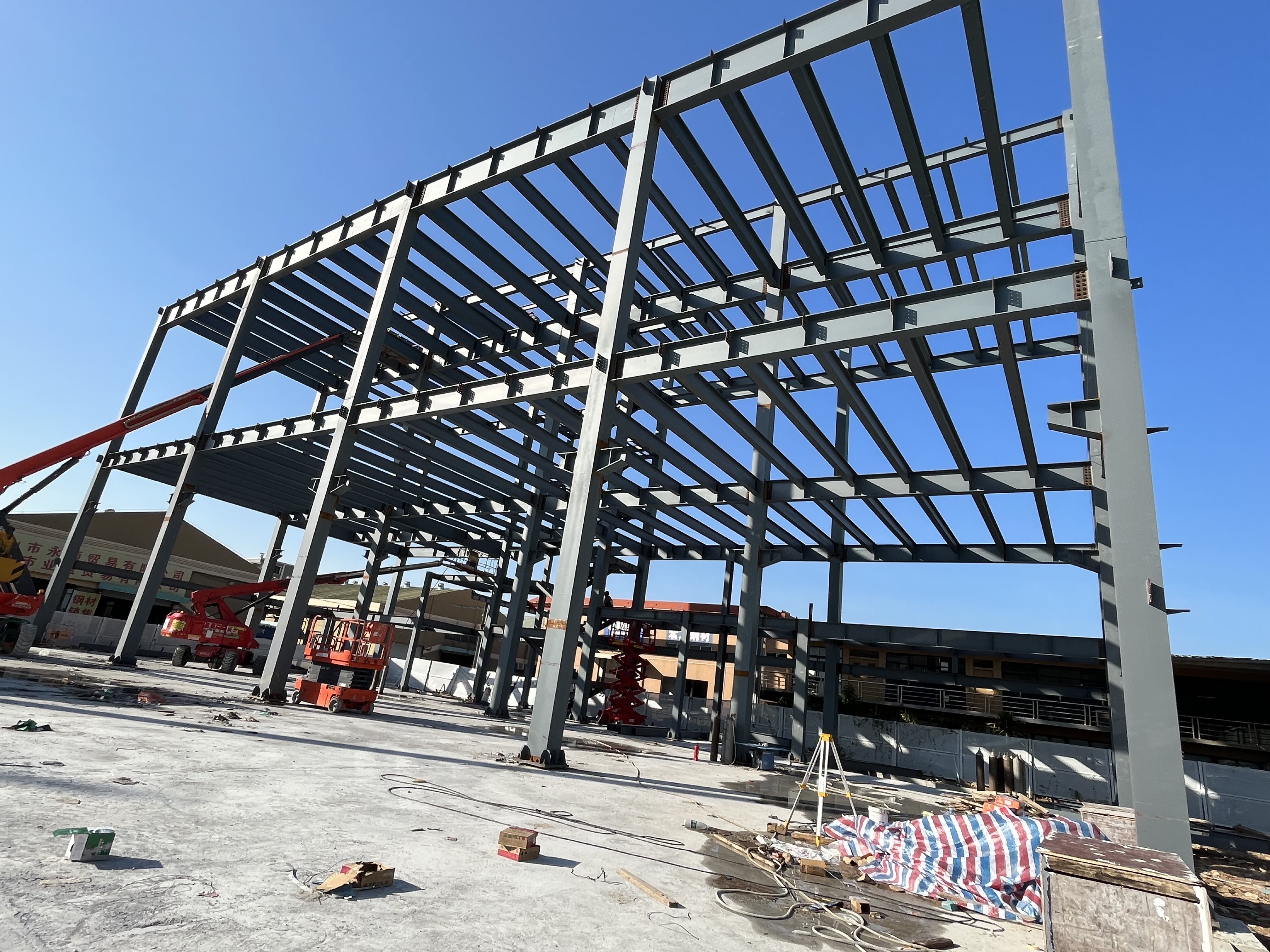The Environmental Impact of Dry Construction in Steel Buildings
How Dry Construction Minimizes Water Waste
Dry construction significantly lowers water usage compared to traditional building methods, which helps reduce the environmental footprint of construction projects. Traditional construction often involves water-intensive processes, resulting in up to 30% waste of the water used, according to the Environmental Protection Agency (EPA). This waste contributes negatively to the environment, highlighting the need for sustainable practices. Dry construction, which emphasizes the use of modular prefabrication, addresses these concerns by virtually eliminating the need for water-dependent activities, such as wet concrete pouring. This innovative approach not only preserves valuable water resources but also aligns with the urgent environmental goals of reducing waste and conserving natural resources in the construction of steel buildings.
Energy-Efficient Manufacturing Processes
The shift to energy-efficient manufacturing processes in dry-constructed steel buildings reflects an industry-wide push for sustainability. These processes often incorporate renewable energy sources during production, helping reduce the carbon footprint of manufacturing. Research has shown that energy-efficient prefab steel buildings can lessen energy consumption by about 20% compared to traditional structures. By investing in off-site manufacturing, which minimizes on-site waste, companies can significantly cut down greenhouse gas emissions, thereby supporting broader sustainability objectives. This approach not only improves the efficiency of prefab steel buildings but also contributes to environmental goals, aligning with industry trends towards eco-friendly construction practices. Emphasizing this transformation supports the creation of greener, more sustainable buildings capable of meeting the rising demand for environmentally conscious construction solutions.
Cost-Effectiveness of Prefabricated Steel Buildings
Upfront Savings Compared to Traditional Methods
Prefabricated steel buildings are renowned for their cost-effectiveness, primarily due to their streamlined manufacturing processes and reduced labor requirements. These buildings are often delivered as pre-engineered kits, dramatically reducing the resources and time needed for on-site construction. Industry reports indicate that the use of prefab methods can save approximately 10-20% on overall construction costs by shortening project timelines. This efficiency not only lowers initial costs but also minimizes the risk of on-site delays, which are common in traditional construction methods and often lead to budget overruns. By embracing prefabricated steel building techniques, businesses and developers can achieve significant financial efficiency, making it an attractive option for various construction projects.
Reduced Operational Costs Through Energy Efficiency
Energy efficiency is another standout feature of prefabricated steel buildings, leading to substantial reductions in operational costs over time. These structures incorporate superior insulation and advanced energy management systems, resulting in considerable savings on utility bills. Data suggests that businesses adopting these energy-efficient solutions can experience a reduction in operational expenses by as much as 30% annually. Additionally, the robustness and durability of steel contribute to lower maintenance costs, extending the cost-effectiveness of these buildings well beyond their construction phase. With energy-efficient prefabricated steel buildings, businesses can ensure a more sustainable and financially beneficial operation in the long term.
Key Energy-Saving Features in Modern Steel Buildings
Thermal Insulation and Climate Control
Modern steel buildings take advantage of cutting-edge thermal insulation technologies that significantly curtail heat loss. This innovation reduces energy consumption substantially, allowing for heating and cooling savings of up to 40%. By using high-performance insulation like spray foam and rigid foam boards, these buildings can maintain optimal indoor climates. Such advancements in climate control not only contribute to occupant comfort but also enhance energy efficiency. In essence, advanced thermal insulation plays a key role in reducing the overall energy footprint of steel structures.
Renewable Energy Integration (Solar/Wind)
Incorporating renewable energy systems, such as solar and wind, is becoming commonplace in modern steel buildings. These integrations promote the utilization of renewable resources and lead to the possibility of achieving net-zero energy consumption. According to research, buildings fitted with these systems can offset or eliminate utility costs through self-generated energy. For example, the installation of photovoltaic panels on prefabricated roofs enables businesses to capitalize on natural resources, supporting sustainability and reducing reliance on traditional energy sources.
Smart Building Systems for Optimal Resource Use
Steel buildings equipped with smart technologies, including IoT-enabled sensors and automated systems, optimize energy use by adjusting to real-time building conditions. These systems can lower energy consumption by approximately 20% by tuning resource management based on occupancy and climate. The integration of such technologies not only curtails energy waste but also enhances environmental accountability, offering significant advantages for businesses aiming to optimize efficiency in their operations. Smart building systems thus play a pivotal role in maximizing resource use and minimizing environmental impact.
Sustainable Trends Shaping the Future of Steel Construction
Recyclable Materials and Circular Economy Practices
The recyclability of steel is a cornerstone of sustainability in construction, playing a vital role in reducing environmental impact. As one of the most recycled materials globally, approximately 70% of steel is recycled, highlighting its contribution to minimizing the demand for new materials and reducing energy consumption during production. This not only conserves natural resources but also significantly lowers greenhouse gas emissions associated with manufacturing. Embracing circular economy practices in construction further extends the lifecycle of materials and minimizes waste. By prioritizing the use of recyclable materials, the industry adopts an environmentally friendly approach that helps meet the growing demand for sustainable building solutions.
Prefab Innovations Driving Water and Electricity Conservation
Innovative prefabrication techniques are transforming the way we conserve resources in steel construction, offering significant benefits for water and electricity conservation during the building process. Precision engineering in prefabricated buildings allows for the design of structures that minimize waste and improve energy efficiency by tailoring construction methods and integrating advanced technologies. One upcoming trend is the shift towards modular prefab designs, which optimize resource use and facilitate the integration of systems that save both water and electricity. As we look to the future of steel structure warehouses and other prefab steel buildings, leveraging these innovations not only conserves precious resources but also supports the creation of buildings with a reduced environmental footprint.


